List of mammals of Colorado on:
[Wikipedia]
[Google]
[Amazon]
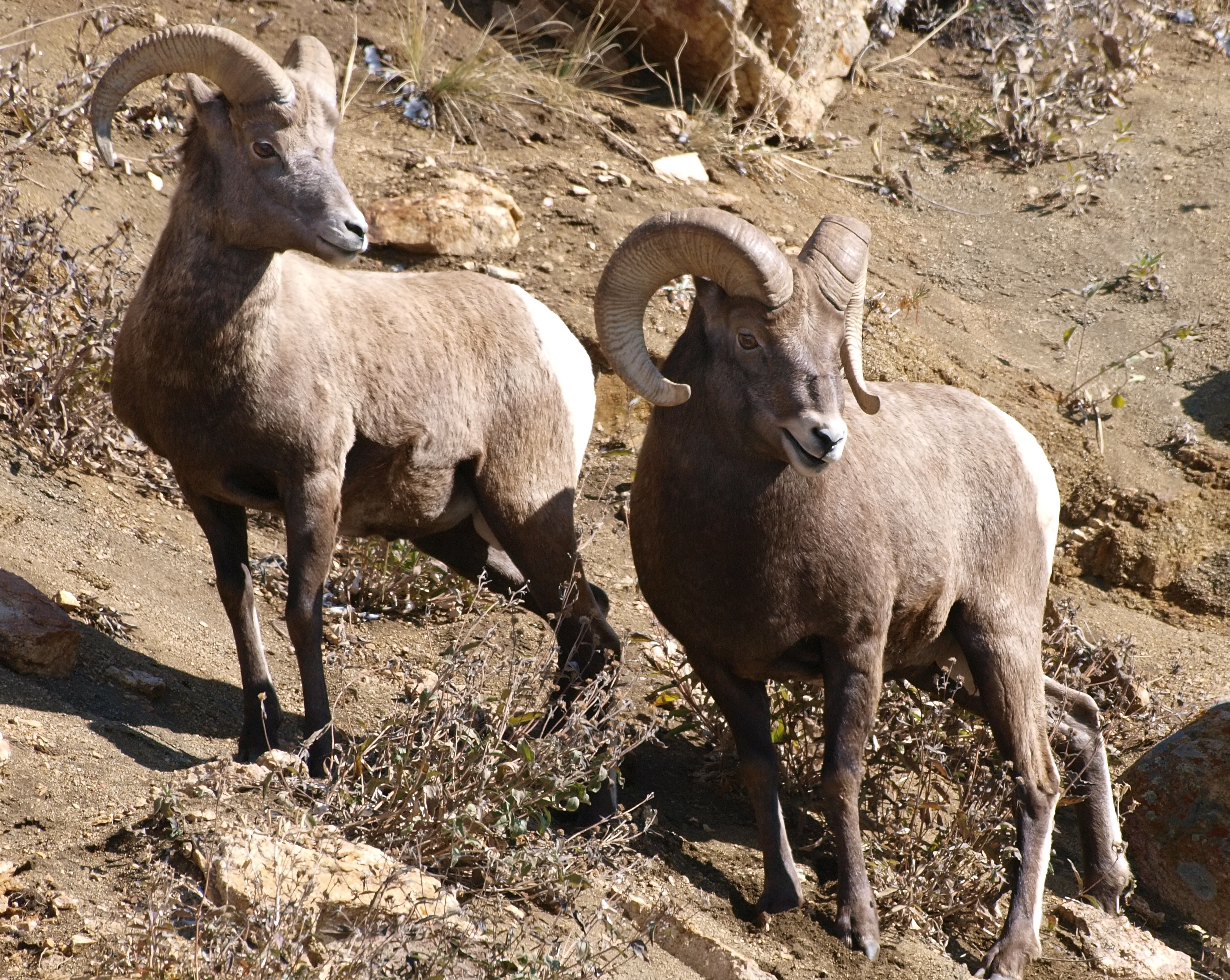 This list of mammals of Colorado includes every wild
This list of mammals of Colorado includes every wild
 Order: DidelphimorphiaFamily: Didelphidae
* Virginia opossum, ''Didelphis virginiana''
Order: DidelphimorphiaFamily: Didelphidae
* Virginia opossum, ''Didelphis virginiana''
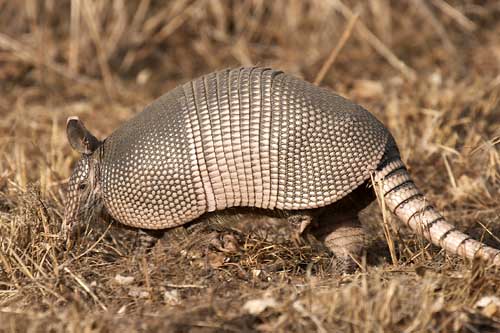 Order: CingulataFamily: Dasypodidae
* Nine-banded armadillo, ''Dasypus novemcinctus''
Order: CingulataFamily: Dasypodidae
* Nine-banded armadillo, ''Dasypus novemcinctus''
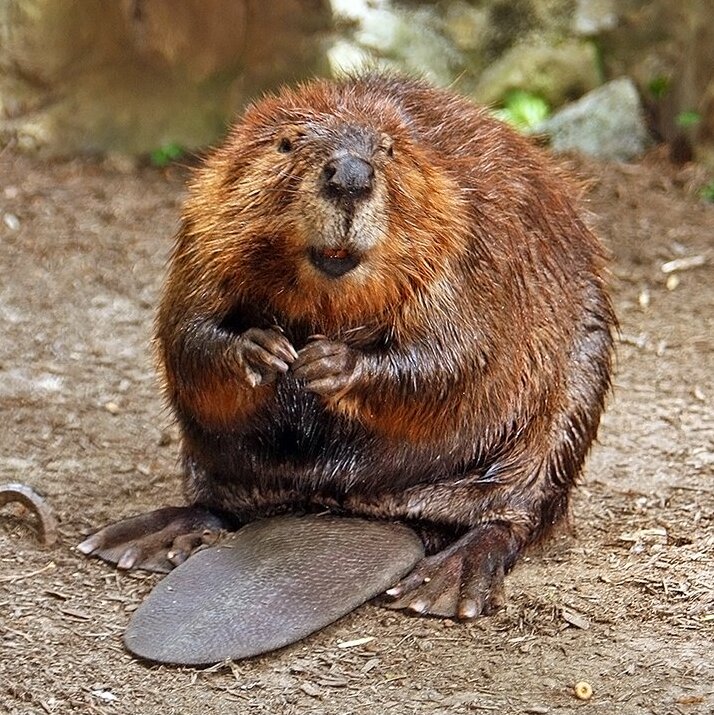 Order: RodentiaFamily: Castoridae
* North American beaver, ''Castor canadensis''
Order: RodentiaFamily: Castoridae
* North American beaver, ''Castor canadensis''
 Order:
Order:
 Order:
Order:

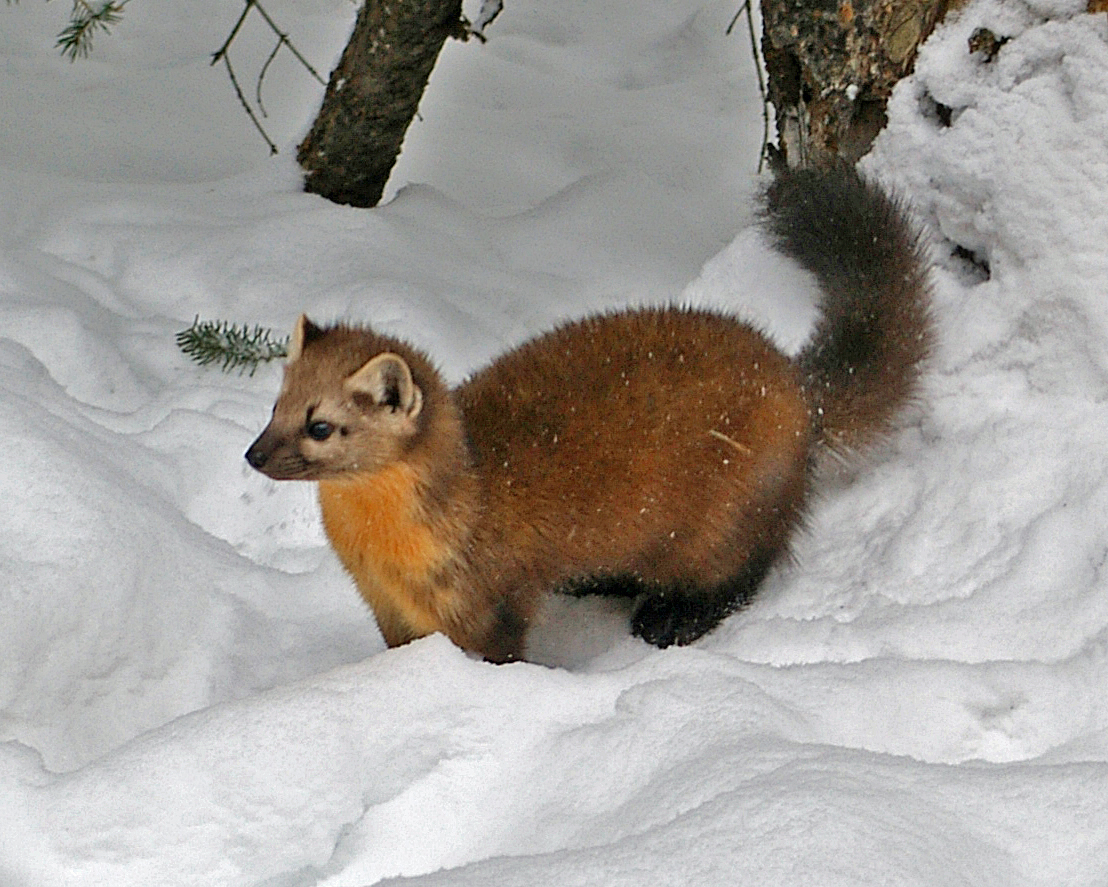

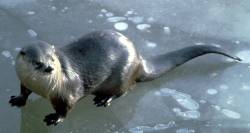 Order:
Order:
 Order:
Order:
 Order: ArtiodactylaFamily: Cervidae
* Moose, ''Alces alces''
*
Order: ArtiodactylaFamily: Cervidae
* Moose, ''Alces alces''
*
 Order: ArtiodactylaFamily: Bovidae
* American bison, ''Bison bison'' reintroduced
* Mountain goat, ''Oreamnos americanus'' introduced
* Bighorn sheep, ''Ovis canadensis''
Order: ArtiodactylaFamily: Bovidae
* American bison, ''Bison bison'' reintroduced
* Mountain goat, ''Oreamnos americanus'' introduced
* Bighorn sheep, ''Ovis canadensis''
Mammal Diversity Database
Colorado Mammals
 This list of mammals of Colorado includes every wild
This list of mammals of Colorado includes every wild mammal
Mammals () are a group of vertebrate animals constituting the class Mammalia (), characterized by the presence of mammary glands which in females produce milk for feeding (nursing) their young, a neocortex (a region of the brain), fur or ...
species seen in the U.S. state of Colorado, based on the list published by the Colorado Division of Wildlife.
It does not include species found only in captivity. Species in this list are grouped by order
Order, ORDER or Orders may refer to:
* Categorization, the process in which ideas and objects are recognized, differentiated, and understood
* Heterarchy, a system of organization wherein the elements have the potential to be ranked a number of d ...
and then by family within each order. The common name for each species is followed by its binomial name
In taxonomy, binomial nomenclature ("two-term naming system"), also called nomenclature ("two-name naming system") or binary nomenclature, is a formal system of naming species of living things by giving each a name composed of two parts, bot ...
.
The following codes are used to designate some species:
*EN - Species is listed as endangered by the IUCN
The International Union for Conservation of Nature (IUCN; officially International Union for Conservation of Nature and Natural Resources) is an international organization working in the field of nature conservation and sustainable use of natu ...
.
*NT - Species is listed as near threatened by the IUCN.
Didelphimorphia
Opossums
 Order: DidelphimorphiaFamily: Didelphidae
* Virginia opossum, ''Didelphis virginiana''
Order: DidelphimorphiaFamily: Didelphidae
* Virginia opossum, ''Didelphis virginiana''
Cingulata
Armadillos
 Order: CingulataFamily: Dasypodidae
* Nine-banded armadillo, ''Dasypus novemcinctus''
Order: CingulataFamily: Dasypodidae
* Nine-banded armadillo, ''Dasypus novemcinctus''
Rodentia
Beavers
 Order: RodentiaFamily: Castoridae
* North American beaver, ''Castor canadensis''
Order: RodentiaFamily: Castoridae
* North American beaver, ''Castor canadensis''
Pocket gophers
Order: RodentiaFamily: Geomyidae * Yellow-faced pocket gopher, ''Cratogeomys castanops'' * Plains pocket gopher, ''Geomys bursarius'' *Botta's pocket gopher
Botta's pocket gopher (''Thomomys bottae'') is a pocket gopher native to western North America. It is also known in some sources as valley pocket gopher, particularly in California. Both the specific and common names of this species honor Paul-É ...
, ''Thomomys bottae''
* Northern pocket gopher, ''Thomomys talpoides''
Kangaroo rats, pocket mice
Order: RodentiaFamily: Heteromyidae * Hispid pocket mouse, ''Chaetodipus hispidus'' * Ord's kangaroo rat, ''Dipodomys ordii'' *Olive-backed pocket mouse
The olive-backed pocket mouse (''Perognathus fasciatus'') is a species of rodent in the family Heteromyidae. It is found in the central Great Plains of Canada and the United States where it is widespread and relatively common; the IUCN consider ...
, ''Perognathus fasciatus''
*Plains pocket mouse
The plains pocket mouse (''Perognathus flavescens'') is a heteromyid rodent of North America.Monk, R. Richard, and J. Knox Jones.Perognathus flavescens" Mammalian Species 525 (1996): 1-4. It ranges from southwestern Minnesota and southeastern N ...
, ''Perognathus flavescens''
*Silky pocket mouse
The silky pocket mouse (''Perognathus flavus'') is a species of rodent in the family Heteromyidae. It is found in northern and central Mexico and the southwest region of the United States. It is a species of least concern, according to the IUCN, ...
, ''Perognathus flavus''
*Great Basin pocket mouse
The Great Basin pocket mouse (''Perognathus parvus'') is a species of rodent in the family Heteromyidae.Williams, Daniel F.; Genoways, Hugh H.; Braun, Janet K. 1993. Taxonomy. In: Genoways, Hugh H.; Brown, James H. (eds.) ''Biology of the Heterom ...
, ''Perognathus merriami''
New World porcupines
Order: RodentiaFamily: Erethizontidae * North American porcupine, ''Erethizon dorsatum''Jumping mice
Order: RodentiaFamily: Dipodidae *Meadow jumping mouse
The meadow jumping mouse (''Zapus hudsonius'') is the most widely distributed mouse in the family Zapodidae. Its range extends from the Atlantic coast in the east to the Great Plains west, and from the arctic tree lines in Canada and Alaska to ...
, ''Zapus hudsonius''
*Western jumping mouse
The western jumping mouse (''Zapus princeps''), is a species of rodent in the family Zapodidae. It is found in Canada and the United States.
Western jumping mice evolved during the Pleistocene, possibly from the fossil species '' Zapus burti'', ...
, ''Zapus princeps''
New World rats, New World mice, voles
Order: RodentiaFamily: Cricetidae *Sagebrush vole
The sagebrush vole (''Lemmiscus curtatus'') is a tiny vole found in western North America. This is the only member of genus ''Lemmiscus''.
They are somewhat similar in appearance to lemmings. They have chunky bodies with short legs and a very sh ...
, ''Lemmiscus curtatus''
* Long-tailed vole, ''Microtus longicaudus''
* Mexican vole, ''Microtus mexicanus''
* Montane vole, ''Microtus montanus''
* Prairie vole, ''Microtus ochrogaster''
* Meadow vole, ''Microtus pennsylvanicus''
*Southern red-backed vole
The southern red-backed vole or Gapper's red-backed vole (''Myodes gapperi'') is a small slender vole found in Canada and the northern United States. It is closely related to the western red-backed vole (''Myodes californius''), which lives to th ...
, ''Myodes gapperii''
*White-throated woodrat
The white-throated woodrat (''Neotoma albigula'') is a species of rodent in the family Cricetidae. It is found from central Mexico north to Utah and Colorado in the United States. It is primarily a western species in the United States, extending ...
, ''Neotoma albigula''
*Bushy-tailed woodrat
The bushy-tailed woodrat, or packrat (''Neotoma cinerea'') is a species of rodent in the family Cricetidae found in Canada and the United States.
Its natural habitats are boreal forests, temperate forests, dry savanna, temperate shrubland, and t ...
, ''Neotoma cinerea''
*Eastern woodrat
The eastern woodrat (''Neotoma floridana''), also known as the Florida woodrat or bush rat, is a pack rat native to the central and Eastern United States. It constructs large dens that may serve as nests for many generations and stores food in o ...
, ''Neotoma floridana''
*Desert woodrat
The desert woodrat (''Neotoma lepida'') is a species of pack rat native to desert regions of western North America.
Description
Desert woodrats are relatively small for pack rats, measuring in length, including a tail. They weigh from , wi ...
, ''Neotoma lepida''
*Mexican woodrat
The Mexican woodrat (''Neotoma mexicana'') is a medium-sized pack rat. Distribution and habitat
It ranges from the United States (Utah, Colorado, New Mexico and parts of Arizona and Trans-Pecos Texas) south to Honduras. Although occurring at l ...
, ''Neotoma mexicana''
*Southern plains woodrat
The Southern Plains woodrat (''Neotoma micropus'') is a species of rodent in the family Cricetidae. It is found in northwest Mexico and in Colorado, Kansas, New Mexico, Oklahoma, and Texas in the United States. The subspecies ''Neotoma micropus ...
, ''Neotoma micropus''
*Muskrat
The muskrat (''Ondatra zibethicus'') is a medium-sized semiaquatic rodent native to North America and an introduced species in parts of Europe, Asia, and South America. The muskrat is found in wetlands over a wide range of climates and habitat ...
, ''Ondatra zibethicus''
*Northern grasshopper mouse
The northern grasshopper mouse (''Onychomys leucogaster'') is a North American carnivorous rodent of the family Cricetidae. It ranges over much of the western part of the continent, from southern Saskatchewan and central Washington to Tamaulipas ...
, ''Onychomys leucogaster''
*Brush mouse
The brush mouse (''Peromyscus boylii'') is a species of rodent in the family Cricetidae. It is found in mountainous areas of Mexico and the western United States at altitudes over .
Description
The brush mouse is medium-sized, with small ears a ...
, ''Peromyscus boylii''
*Canyon mouse
The canyon mouse (''Peromyscus crinitus'') is a gray-brown mouse found in many states of the western United States and northern Mexico. Its preferred habitat is arid, rocky desert. Vegetation has little or no effect on the distribution of canyon ...
, ''Peromyscus crinitus''
* White-footed mouse, ''Peromyscus leucopus''
*Northern rock mouse
The northern rock mouse (''Peromyscus nasutus'') is a species of rodent in the family Cricetidae. It is found in Mexico and the United States
The United States of America (U.S.A. or USA), commonly known as the United States (U.S. or US) ...
, ''Peromyscus nasutus''
*Western deer mouse
The western deermouse or western deer mouse (''Peromyscus sonoriensis'') is a rodent native to North America. It is widespread throughout the western half of the continent, mainly in areas west of the Mississippi River.
Taxonomy
It was formerl ...
, ''Peromyscus sonoriensis''
*Pinyon mouse
The pinyon mouse (''Peromyscus truei'') is native to the southwestern United States and Baja California in Mexico. These medium-sized mice are often distinguished by their relatively large ears. The range of this species extends from southern ...
, ''Peromyscus truei''
*Western heather vole
The western heather vole (''Phenacomys intermedius'') is a small vole found in western North America. Until recently, the eastern heather vole, (''Phenacomys ungava''), was considered to be a subspecies. They have short ears with stiff orange ha ...
, ''Phenacomys intermedius''
*Western harvest mouse
The western harvest mouse (''Reithrodontomys megalotis'') is a small neotomine mouse native to most of the western United States. Many authorities consider the endangered salt marsh harvest mouse to be a subspecies, but the two are now usually ...
, ''Reithrodontomys megalotis''
* Plains harvest mouse, ''Reithrodontomys montanus''
*Hispid cotton rat
The hispid cotton rat (''Sigmodon hispidus'') is a rodent species long thought to occur in parts of South America, Central America, and southern North America. However, recent taxonomic revisions, based on mitochondrial DNA sequence data, have ...
, ''Sigmodon hispidus''
Chipmunks, marmots, squirrels
Order: RodentiaFamily: Sciuridae *White-tailed antelope squirrel
The white-tailed antelope squirrel (''Ammospermophilus leucurus'') is a diurnal species of ground squirrel, scientifically classified in the order Rodentia and family Sciuridae, found in arid regions of the southwestern United States and the B ...
, ''Ammospermophilus leucurus''
*Golden-mantled ground squirrel
The golden-mantled ground squirrel (''Callospermophilus lateralis'') is a ground squirrel native to western North America. It is distributed in the Rocky Mountains of British Columbia and Alberta, and through much of the western United States.
...
, ''Callospermophilus lateralis''
* Gunnison's prairie dog, ''Cynomys gunnisoni''
* White-tailed prairie dog, ''Cynomys leucurus''
* Black-tailed prairie dog, ''Cynomys ludovicianus''
* Northern flying squirrel, ''Glaucomys sabrinus''
* Thirteen-lined ground squirrel, ''Ictodomys tridecemlineatus''
*Yellow-bellied marmot
The yellow-bellied marmot (''Marmota flaviventris''), also known as the rock chuck, is a large, stout-bodied ground squirrel in the marmot genus. It is one of fourteen species of marmots, and is native to mountainous regions of southwestern Canad ...
, ''Marmota flaviventris''
*Cliff chipmunk
The cliff chipmunk (''Neotamias dorsalis'') is a small, bushy-tailed squirrel that typically lives along cliff walls or boulder fields bordering Pinyon-juniper woodlands in the Western United States and Mexico (commonly spotted in northern Arizo ...
, ''Neotamias dorsalis''
*Least chipmunk
The least chipmunk (''Neotamias minimus'') is the smallest species of chipmunk and the most widespread in North America.
Description
It is the smallest species of chipmunk, measuring about in total length with a weight of . The body is gray to ...
, ''Neotamias minimus''
*Colorado chipmunk
The Colorado chipmunk (''Neotamias quadrivittatus'') is a species of chipmunk in the squirrel family Sciuridae. It is Endemism, endemic to Colorado, Utah, Arizona and New Mexico in the United States.
Description
It can be found most often in co ...
, ''Neotamias quadrivittatus''
*Hopi chipmunk
The Hopi chipmunk, ''Neotamias rufus'', is a small chipmunk found in Colorado, Utah and Arizona in the southwestern United States. It was previously grouped with the Colorado chipmunk, ''T. quadrivittatus''. This species is listed as "Least Co ...
, ''Neotamias rufus''
* Uinta chipmunk, ''Neotamias umbrinus''
*Rock squirrel
The rock squirrel (''Otospermophilus variegatus'') is a species of rodent in the family Sciuridae and is native to Mexico and the Southwestern United States, including southern Nevada, Utah, Colorado, Arizona, New Mexico, West Texas, and the panha ...
, ''Otospermophilus variegatus''
*Abert's squirrel
Abert's squirrel or the tassel-eared squirrel (''Sciurus aberti'') is a tree squirrel in the genus ''Sciurus'' native to the southern Rocky Mountains from the United States to the northern Sierra Madre Occidental of Mexico, with concentrations fo ...
, ''Sciurus aberti''
* Fox squirrel, ''Sciurus niger''
*Southwestern red squirrel
The southwestern red squirrel or Fremont's squirrel (''Tamiasciurus fremonti'') is a species of tree squirrel endemic to high-altitude regions of the southwestern United States.
Taxonomy
It was formerly considered conspecific with the Americ ...
, ''Tamiasciurus fremonti''
*American red squirrel
The American red squirrel (''Tamiasciurus hudsonicus'') is one of three species of tree squirrels currently classified in the genus ''Tamiasciurus'', known as the pine squirrels (the others are the Douglas squirrel, ''T. douglasii'', and the sou ...
, ''Tamiasciurus hudsonicus''
*Wyoming ground squirrel
The Wyoming ground squirrel (''Urocitellus elegans'') is a species of rodent in the family Sciuridae. It is endemic to the Northwestern United States
The Northwestern United States, also known as the American Northwest or simply the Northwe ...
, ''Urocitellus elegans''
* Spotted ground squirrel, ''Xerospermophilus spilosoma''
Lagomorpha
Pikas
Order: LagomorphaFamily: Ochotonidae * American pika, ''Ochotona princeps''Hares, rabbits
Order: LagomorphaFamily: Leporidae *Pygmy rabbit
The pygmy rabbit (''Brachylagus idahoensis'') is a rabbit species native to the United States. It is also the only native rabbit species in North America to dig its own burrow. The pygmy rabbit differs significantly from species within either the ...
, ''Brachylagus idahodensis''
* Snowshoe hare, ''Lepus americanus''
* Black-tailed jackrabbit, ''Lepus californicus''
*White-tailed jackrabbit
The white-tailed jackrabbit (''Lepus townsendii''), also known as the prairie hare and the white jack, is a species of hare found in western North America. Like all hares and rabbits, it is a member of the family Leporidae of order Lagomorpha ...
, ''Lepus townsendii''
* Desert cottontail, ''Sylvilagus audubonii''
* Eastern cottontail, ''Sylvilagus floridanus''
*Mountain cottontail
The mountain cottontail or Nuttall's cottontail (''Sylvilagus nuttallii'') is a species of mammal in the family Leporidae. It is found in Canada and the United States.
Description
The mountain cottontail is a small rabbit but its size is rel ...
, ''Sylvilagus nuttallii''
Eulipotyphla
Shrews
Order: EulipotyphlaFamily: Soricidae *Elliot's short-tailed shrew
Elliot's short-tailed shrew (''Blarina hylophaga'') is a small, slate grey, short-tailed species of shrew. Its common name comes from Daniel Giraud Elliot, who first described the species in 1899.
Description
Elliot's short-tailed shrew is simil ...
, ''Blarina hylophaga''
*North American least shrew
The North American least shrew (''Cryptotis parvus'') is one of the smallest mammals, growing to be only up to 3 inches long. It has a long pointed snout and a tail never more than twice the length of its hind foot. The dense fur coat is e ...
, ''Cryptotis parva''
*Crawford's gray shrew
Crawford's gray shrew (''Notiosorex crawfordi''), also known as the desert shrew, is a small shrew found in the southwestern United States and northern Mexico. It is a member of the family Soricidae of the order Eulipotyphla. It was the only ...
, ''Notiosorex crawfordi''
* Cinereus shrew, ''Sorex cinereus''
*American pygmy shrew
The American pygmy shrew (''Sorex hoyi'') is a small shrew found in Northern Alaska, Canada, and the northern United States, south through the Appalachian Mountains. It was first discovered in 1831 by naturalist William Cane in Georgian Bay, Parr ...
, ''Sorex hoyi''
*Merriam's shrew
Merriam's shrew (''Sorex merriami'') is a species of mammal in the family Soricidae. It is endemic to the western United States and extreme southern British Columbia in Canada
Canada is a country in North America. Its ten provinces a ...
, ''Sorex merriami''
* Montane shrew, ''Sorex monticolus''
*Dwarf shrew
The dwarf shrew (''Sorex nanus'') is a species of mammal in the family Soricidae endemic to Arizona, Colorado, Montana, Nebraska, New Mexico, South Dakota, Utah, and Wyoming in the United States
The United States of America (U.S.A. or U ...
, ''Sorex nanus''
*American water shrew
The American water shrew (''Sorex palustris'') or northern water shrew, is a shrew found in the nearctic faunal region located throughout the mountain ranges of the northern United States and in Canada and Alaska. The organism resides in semi-aq ...
, ''Sorex palustris''
Moles
Order: EulipotyphlaFamily: Talpidae * Eastern mole, ''Scalopus aquaticus''Chiroptera
Vesper bats
Order: ChiropteraFamily: Vespertilionidae * Silver-haired bat, ''Lasionycteris noctivagans'' * California myotis, ''Myotis californicus'' *Western small-footed myotis
The western small-footed bat (''Myotis ciliolabrum''), also known as the western small-footed myotis, is a species of vesper bat native to North America.
Description
Western small-footed bats are relatively small bats, having a total length of , ...
, ''Myotis ciliolabrum''
*Long-eared myotis
The long-eared myotis (''Myotis evotis'') is a species of vesper bat in the suborder Microchiroptera. It can be found in western Canada, the western United States, and Baja California in Mexico.
Description
The long-eared myotis is a pale brown ...
, ''Myotis evotis''
* Little brown bat, ''Myotis lucifugus''
*Fringed myotis
The fringed myotis (''Myotis thysanodes'') is a species of vesper bat that is found in British Columbia, Mexico, and the western United States.
Description
''Myotis thysanodes,'' or the fringed myotis, has the shortest ears of the long-eared my ...
, ''Myotis thysanodes''
*Long-legged myotis
The long-legged myotis (''Myotis volans'') is a species of vesper bat that can be found in western Canada, Mexico, and the western United States.
Description
''Myotis volans'' is a species of bat found in Order Chiroptera, Family Vespertillion ...
, ''Myotis volans''
*Yuma myotis
The Yuma myotis (''Myotis yumanensis'') is a species of vesper bat native to western North America.
Description
The Yuma myotis is a relatively small myotis, measuring in head-body length, with an average wingspan of and a weight of about . T ...
, ''Myotis yumanensis''
* Pallid bat, ''Antrozous pallidus''
* Big brown bat, ''Eptesicus fuscus''
*Spotted bat
The spotted bat (''Euderma maculatum'') is a species of vesper bat and the only species of the genus ''Euderma''.
Description
The spotted bat was first described by zoologist Joel Asaph Allen from the American Museum of Natural History in 1891. ...
, ''Euderma maculatum''
*Eastern red bat
The eastern red bat (''Lasiurus borealis'') is a species of microbat in the family Vespertilionidae. Eastern red bats are widespread across eastern North America, with additional records in Bermuda.
Taxonomy and etymology
It was described in 1 ...
, ''Lasiurus borealis''
*Hoary bat
The hoary bat (''Lasiurus cinereus'') is a species of bat in the vesper bat family, Vespertilionidae. It lives throughout most of North America (possibly including Hawaii, although this is disputed).
Taxonomy
The hoary bat was described as a ...
, ''Lasiurus cinereus''
*Western pipistrelle
The canyon bat (''Parastrellus hesperus''), also known as the western pipistrelle, is a species of vesper bat. It is found in Mexico and in the western United States. The species has historically been placed in the genus ''Pipistrellus
''Pip ...
, ''Parastrellus hesperus''
*Townsend's big-eared bat
Townsend's big-eared bat (''Corynorhinus townsendii'') is a species of vesper bat.
Description
Townsend's big-eared bat is a medium-sized bat (7-12 g)
, ''Corynorhinus townsendii''
Free-tailed bats
Order: ChiropteraFamily: Molossidae *Big free-tailed bat
The big free-tailed bat (''Nyctinomops macrotis'') is a bat species found in the Americas.
Taxonomy
It was described as a new species in 1839 by British zoologist John Edward Gray. Gray placed it in the now-defunct genus ''Nyctinomus'', with a ...
, ''Nyctinomops macrotis''
* Mexican free-tailed bat, ''Tadarida brasiliensis''
Carnivora
Cats
 Order:
Order: Carnivora
Carnivora is a Clade, monophyletic order of Placentalia, placental mammals consisting of the most recent common ancestor of all felidae, cat-like and canidae, dog-like animals, and all descendants of that ancestor. Members of this group are f ...
Family: Felidae
Felidae () is the family of mammals in the order Carnivora colloquially referred to as cats, and constitutes a clade. A member of this family is also called a felid (). The term "cat" refers both to felids in general and specifically to the ...
* Canada lynx, ''Lynx canadensis'' reintroduced
*Bobcat
The bobcat (''Lynx rufus''), also known as the red lynx, is a medium-sized cat native to North America. It ranges from southern Canada through most of the contiguous United States to Oaxaca in Mexico. It is listed as Least Concern on the IUC ...
, ''Lynx rufus''
*Cougar
The cougar (''Puma concolor'') is a large Felidae, cat native to the Americas. Its Species distribution, range spans from the Canadian Yukon to the southern Andes in South America and is the most widespread of any large wild terrestrial mamm ...
, ''Puma concolor''
Canids
 Order:
Order: Carnivora
Carnivora is a Clade, monophyletic order of Placentalia, placental mammals consisting of the most recent common ancestor of all felidae, cat-like and canidae, dog-like animals, and all descendants of that ancestor. Members of this group are f ...
Family: Canidae
Canidae (; from Latin, ''canis'', "dog") is a biological family of dog-like carnivorans, colloquially referred to as dogs, and constitutes a clade. A member of this family is also called a canid (). There are three subfamilies found within th ...
*Coyote
The coyote (''Canis latrans'') is a species of canis, canine native to North America. It is smaller than its close relative, the wolf, and slightly smaller than the closely related eastern wolf and red wolf. It fills much of the same ecologica ...
, ''Canis latrans''
*Gray wolf
The wolf (''Canis lupus''; : wolves), also known as the gray wolf or grey wolf, is a large canine native to Eurasia and North America. More than thirty subspecies of ''Canis lupus'' have been recognized, and gray wolves, as popularly ...
, ''Canis lupus'' reintroduced
** Great Plains wolf, ''C. l. nubilus'' extinct
** Northwestern wolf, ''C. l. occidentalis''
**Southern Rocky Mountain wolf
The southern Rocky Mountain wolf (''Canis lupus youngi'') is an extinct subspecies of gray wolf which was once distributed over southeastern Idaho, southwestern Wyoming, northeastern Nevada, Utah, western and central Colorado, northwestern Ariz ...
, ''C. l. youngi'' extinct
* Gray fox, ''Urocyon cinereoargenteus''
* Kit fox, ''Vulpes macrotis''
* Swift fox, ''Vulpes velox''
*Red fox
The red fox (''Vulpes vulpes'') is the largest of the true foxes and one of the most widely distributed members of the Order (biology), order Carnivora, being present across the entire Northern Hemisphere including most of North America, Europe ...
, ''Vulpes vulpes''
Bears
Order:Carnivora
Carnivora is a Clade, monophyletic order of Placentalia, placental mammals consisting of the most recent common ancestor of all felidae, cat-like and canidae, dog-like animals, and all descendants of that ancestor. Members of this group are f ...
Family: Ursidae
*American black bear
The American black bear (''Ursus americanus''), also called simply a black bear or sometimes a baribal, is a medium-sized bear endemic to North America. It is the continent's smallest and most widely distributed bear species. American black bear ...
, ''Ursus americanus''
* Brown bear, ''Ursus arctos'' extirpated
**Grizzly bear
The grizzly bear (''Ursus arctos horribilis''), also known as the North American brown bear or simply grizzly, is a population or subspecies of the brown bear inhabiting North America.
In addition to the mainland grizzly (''Ursus arctos horri ...
, ''U. a. horribilis'' extirpated
Skunks
Order:Carnivora
Carnivora is a Clade, monophyletic order of Placentalia, placental mammals consisting of the most recent common ancestor of all felidae, cat-like and canidae, dog-like animals, and all descendants of that ancestor. Members of this group are f ...
Family: Mephitidae
* American hog-nosed skunk, ''Conepatus leuconotus''
*Striped skunk
The striped skunk (''Mephitis mephitis'') is a skunk of the genus '' Mephitis'' that occurs across much of North America, including southern Canada, the United States, and northern Mexico. It is currently listed as least concern by the IUCN on ac ...
, ''Mephitis mephitis''
* Western spotted skunk, ''Spilogale gracilis''
* Eastern spotted skunk, ''Spilogale putorius''
Weasels



 Order:
Order: Carnivora
Carnivora is a Clade, monophyletic order of Placentalia, placental mammals consisting of the most recent common ancestor of all felidae, cat-like and canidae, dog-like animals, and all descendants of that ancestor. Members of this group are f ...
Family: Mustelidae
* Wolverine, ''Gulo gulo'' extirpated
* North American river otter, ''Lontra canadensis''
* Pacific marten, ''Martes caurina''
*Black-footed ferret
The black-footed ferret (''Mustela nigripes''), also known as the American polecatHeptner, V. G. (Vladimir Georgievich); Nasimovich, A. A; Bannikov, Andrei Grigorovich; Hoffmann, Robert S. (2001)''Mammals of the Soviet Union''Volume: v. 2, pt. 1 ...
, ''Mustela nigripes'' reintroduced
*American ermine
The American ermine or American stoat (''Mustela richardsonii'') is a species of mustelid native to most of North America.
Taxonomy
It was long considered conspecific with the stoat (''M. erminea''), but a 2021 study found it to be a distinct ...
, ''Mustela richardsonii''
* Long-tailed weasel, ''Neogale frenata''
* American mink, ''Neogale vison''
* American badger, ''Taxidea taxus''
Procyonids
 Order:
Order: Carnivora
Carnivora is a Clade, monophyletic order of Placentalia, placental mammals consisting of the most recent common ancestor of all felidae, cat-like and canidae, dog-like animals, and all descendants of that ancestor. Members of this group are f ...
Family: Procyonidae
Procyonidae is a New World family of the order Carnivora. It comprises the raccoons, ringtails, cacomistles, coatis, kinkajous, olingos, and olinguitos. Procyonids inhabit a wide range of environments and are generally omnivorous.
Character ...
*Ringtail
The ringtail (''Bassariscus astutus'') is a mammal of the raccoon family native to arid regions of North America. It is widely distributed and well adapted to disturbed areas. It has been legally trapped for its fur. It is listed as Least Co ...
, ''Bassariscus astutus''
* Raccoon, ''Procyon lotor''
Artiodactyla
Pronghorns
Order: ArtiodactylaFamily: Antilocapridae * Pronghorn, ''Antilocapra americana''Deer
 Order: ArtiodactylaFamily: Cervidae
* Moose, ''Alces alces''
*
Order: ArtiodactylaFamily: Cervidae
* Moose, ''Alces alces''
*Elk
The elk (''Cervus canadensis''), also known as the wapiti, is one of the largest species within the deer family, Cervidae, and one of the largest terrestrial mammals in its native range of North America and Central and East Asia. The common ...
, ''Cervus canadensis''
* Mule deer, ''Odocoileus hemionus''
* White-tailed deer, ''Odocoileus virginianus''
Bovids
See also
*List of chordate orders
This article contains a list of all of the classes and orders that are located in the Phylum Chordata.
Subphylum Cephalochordata
Class Leptocardii: Lancelets
* Order Amphioxiformes
Family Pikaiidae †
* Genus Pikaia †
Olfactores (unr ...
* List of regional mammals lists
* Mammal classification
References
{{Lists of mammals by U.S. stateMammal Diversity Database
Colorado Mammals